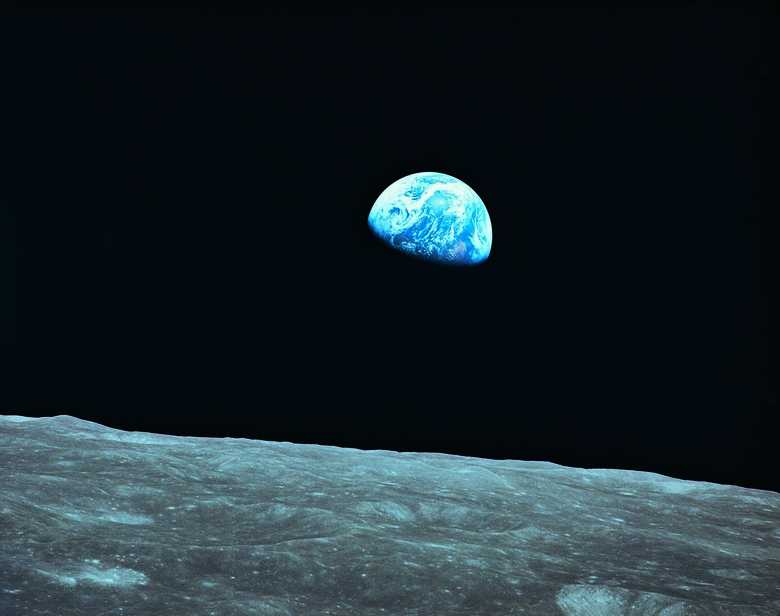Weathering On The Moon Vs. Earth
Water slides into cracks and pores in rock and causes the rock to break into smaller pieces. That process is called weathering. There are two primary weathering mechanisms: freeze-thaw and chemical weathering. Water is critical for both of those processes, and there's plenty of water on the Earth. Space probes and scientific analysis indicate that there's no liquid water on the moon. That means that there's no weathering on the moon — at least not in the way people think of it on Earth. Rock structures on the moon get broken into smaller pieces; it just happens in a different way.
Freeze-Thaw
When rain falls, water seeps into cracks and pores in rock. If the temperature falls low enough for the water to freeze, it will expand and push on the sides of the cracks, opening them up a miniscule amount. Sunlight then melts some of the water and it seeps further in the cracks. Freezing temperatures come again and the crack is stretched. Over thousands or millions of years, the freeze-thaw cycle will break one large rock into smaller chunks — changing a solid mountaintop, for example, into a ragged jumble of boulders.
Chemical Weathering
Feldspar is a kind of igneous rock; that is, it was formed from solidified lava or magma. Some estimates say that feldspar makes up as much as 60 percent of the Earth's crust. Feldspar has another interesting property: in the presence of water it partially converts to clay minerals. Clay is rather soft and easily erodes under the action of wind and rain. So when water seeps in the pores of feldspar, it initiates a chemical reaction that ends up washing away the surface of the rock, leaving tiny sandlike crystals of quartz and other more chemically inactive minerals. Chemical weathering eats away the surface of large rock features, leaving sand to wash away in the rain.
The Moon
Given that weather is created by the interactions among air, water and sunlight, the moon has no weather. So the moon technically has no weathering. But there must be some equivalent process, or else the moon would be something like one gigantic solid rock. The answer is in the hundreds of meteoroids that strike the moon's surface each year. Billions of years ago, meteoroids struck at a much higher rate — and they were generally larger than today's meteoroids. The impacts carry enough energy to shatter rock and send the shards spraying away. The tiny shards are broken down further by energetic cosmic rays and additional micrometeorites. Because these processes do the same thing as weathering on Earth, they're called space weathering.
Space Weathering on Earth
On the scale of the solar system, the Earth and moon are in each other's back pockets — anything space-related that happens to one should happen to the other. So the Earth should see as least as much space weathering as the moon. And it would, if it weren't for the protective envelope the Earth wears: the atmosphere. Nearly all the meteors that head toward the Earth burn up when they hit the atmosphere. The larger ones that hit the Earth can be devastating, but on a global scale they are much smaller in importance than other weathering processes.
Cite This Article
MLA
Gaughan, Richard. "Weathering On The Moon Vs. Earth" sciencing.com, https://www.sciencing.com/weathering-moon-vs-earth-22633/. 24 April 2017.
APA
Gaughan, Richard. (2017, April 24). Weathering On The Moon Vs. Earth. sciencing.com. Retrieved from https://www.sciencing.com/weathering-moon-vs-earth-22633/
Chicago
Gaughan, Richard. Weathering On The Moon Vs. Earth last modified August 30, 2022. https://www.sciencing.com/weathering-moon-vs-earth-22633/
